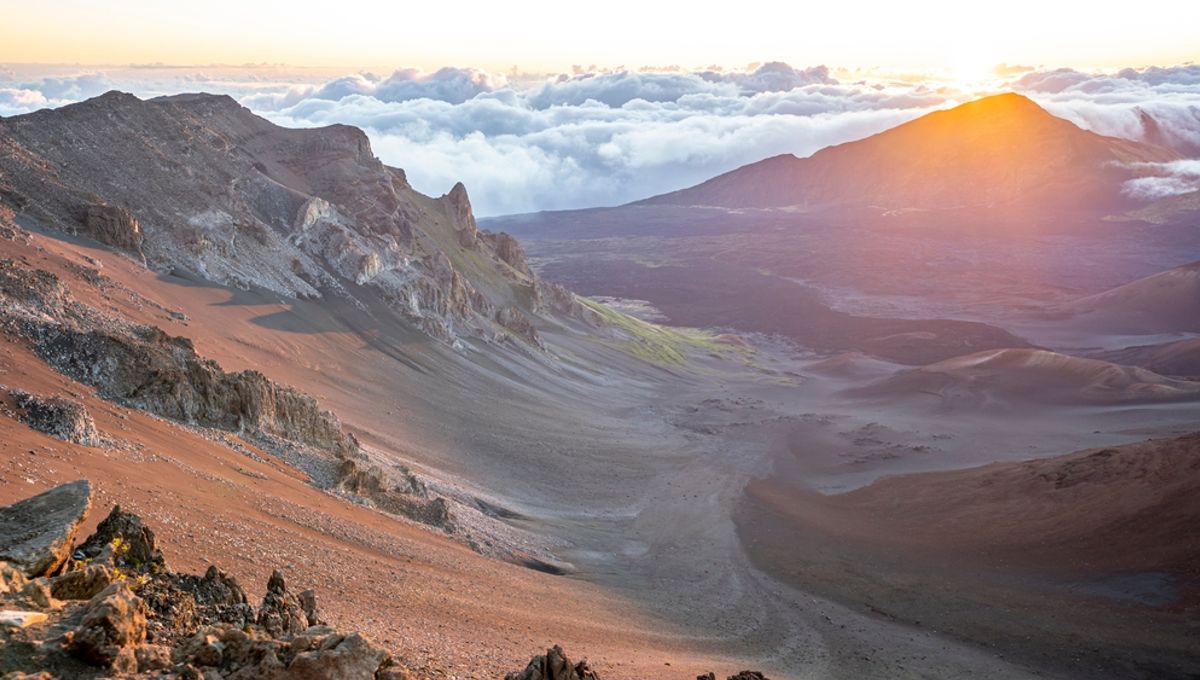
Peace and quiet is hard to come by these days as noise pollution from aircraft, road traffic, and general anthropogenic fuss invades even the remotest of places. Like an endangered species, silence clings to survival in isolated pockets – and may have found its greatest refuge in the Haleakalā Crater on the Hawaiian island of Maui.
Billed as the quietest place on Earth, the 2,600-foot (790-meter) deep crater sits atop the dormant shield volcano that covers around 75 percent of the island’s landmass. Accessing the crater requires a 10,000-foot (3,050-meter) ascent, and sound levels inside the enormous hollow are so low that visitors are said to be able to hear their own heart beat.
Whether or not Haleakalā truly is the world’s most noiseless spot is hard to say, but it does boast a number of unique characteristics that help to shut out sound. For instance, the depth of the crater helps to exclude wind, while the arid landscape is largely devoid of rustling vegetation or chatty wildlife.
According to a documentary produced by PBS, noise levels within the crater can reach as low as ten decibels. However, the most recent study by the US Department of Transportation – conducted in 2003 – reported that average sound levels inside the cavity were around 35 decibels.
For reference, that’s the same as the recommended background noise level for classrooms. In other words, pretty quiet.
However, like most other pristine natural attractions, the Haleakalā National Park is increasingly threatened by anthropogenic noise pollution. In 2013, a sound monitoring study conducted outside the crater revealed that helicopter sounds could be heard 28.6 percent of the time, reflecting the increasing popularity of airborne tourism around the volcano.
The same study found that within the park, natural sounds exceeded 35 decibels roughly six percent of the time during the day, while human-generated sound pollution surpassed this volume for three percent of daytime hours. That may not sound like much, but it’s enough to worry conservationists who are fighting to preserve the world’s natural soundscapes.
A growing body of research points to the alarming impact of noise pollution across various ecosystems and habitats. In the world’s oceans, for instance, shipping sounds are increasingly disrupting marine wildlife, while some studies suggest that the survival of hundreds of species could be threatened by escalating noise levels.
In response, the Natural Sounds and Night Skies Division (NSNSD) has been working to establish appropriate thresholds for soundscape quality in order to protect the acoustic environment within the Haleakalā National Park.
Now, if we could all just keep the noise down.
Source Link: This Hawaiian Volcano's Crater May Be The Quietest Place On Earth – But Humans Threaten The Peace